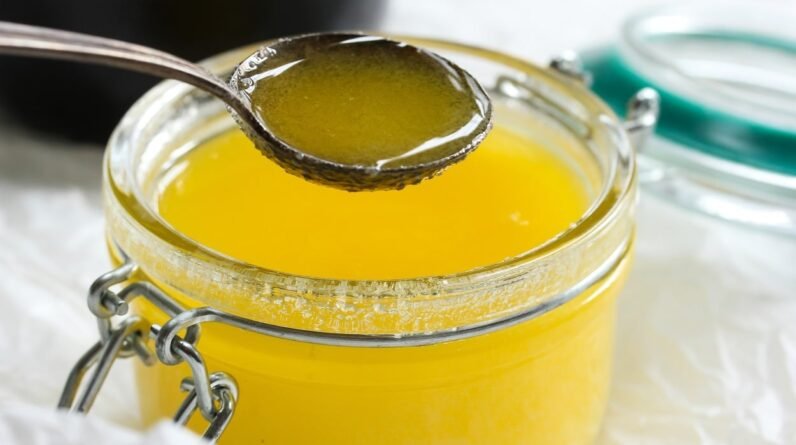
Ever wondered why that glass of wine might be lingering around your waistline?
It’s a question that might pop into your head after a fun night out or while enjoying a cozy evening at home.
Maybe you’ve noticed that your jeans feel a bit snugger after a weekend of socializing. Or perhaps you’re curious why your workouts aren’t quite balancing out your indulgent evenings.
Spoiler alert: Those margaritas might be more than just a fun Friday night treat.
Understanding the link between alcohol and weight gain, especially for women, can be a game-changer in managing your weight and overall health. It’s not just about the calories; it’s also about how alcohol affects your metabolism, hormones, and lifestyle.
Whether you’re a casual wine sipper or a cocktail enthusiast, being aware of these factors can help you make more informed choices. So, let’s break it down and see what’s really going on behind that glass of your favorite drink.
This post may contain affiliate links, which helps keep this content free. Please read our disclosure for more info.
The Calorie Count in Alcoholic Beverages
Alcoholic beverages are sneaky little things. A single glass of wine has about 125 calories, a pint of beer around 200, and a cocktail? Well, depending on what’s in it, you could be sipping down 300 calories or more.
And here’s the kicker—these are often called “empty calories” because they provide no nutritional value. You’re consuming calories without gaining any nutritional benefits.
To put this into perspective, let’s compare these drinks to some common foods. A small apple has about 80 calories, a slice of bread around 70, and a chocolate chip cookie about 150.
So, when you’re having that glass of wine, it’s like eating an extra snack. And if you go for that second or third drink, the calories can really add up quickly.
And I hate to burst your bubble, there’s even more hidden calories in some cocktails!
The mixers in cocktails can really amp up the calorie count. Think about that margaritas again. The tequila is “only” about 100 calories, but the sugary mix can add another 200 calories or more.
The same goes for other popular drinks like rum and Coke or a whiskey sour. Suddenly, what seemed like a simple drink turns into a calorie bomb.
Another sneaky aspect is portion size. Bars and restaurants often serve larger portions than you might pour at home.
A standard serving of wine is 5 ounces, but those generous pours can easily be 8 ounces or more. The same goes for beer and cocktails, where sizes can vary widely.
And let’s not forget about those delicious liqueurs and after-dinner drinks. They can pack a surprising calorie punch too. A small 1.5-ounce serving of Baileys Irish Cream has about 147 calories. Add it to your coffee, and you’ve got a dessert in disguise.
Next time you’re out for a drink or relaxing at home, keep these calorie counts in mind. I’m not saying you have to give up your favorite beverage, but be aware of how they fit into your overall diet.
Small changes, like choosing lighter options or limiting the number of drinks, can make a big difference.
Related Article: Dry January – Unlock Your Best Self!
Metabolism and Alcohol
When you drink, your body prioritizes metabolizing the alcohol over other nutrients. This means your body puts fat burning on hold while it deals with the alcohol.
The metabolic process shifts focus to processing alcohol, causing fat-burning tasks to be delayed. Not the most efficient way to manage things, right?
Alcohol is treated as a mild poison by your body, so it gets top priority in the metabolic queue. Instead of burning fat or processing other nutrients, your body focuses on breaking down the alcohol first.
Most alcohol is metabolized by an enzyme in your liver cells known as alcohol dehydrogenase (ADH). ADH breaks down alcohol into acetaldehyde, and then another enzyme, aldehyde dehydrogenase (ALDH), rapidly breaks down acetaldehyde into acetate.
The acetate is further metabolized and eventually leaves your body as carbon dioxide and water. While this is happening, other metabolic processes, such as fat oxidation, slow down significantly.
This prioritization can lead to the accumulation of fat, especially if you consume alcohol frequently.
The body’s regular process of breaking down carbohydrates and fats is interrupted, which can contribute to weight gain over time.
Additionally, alcohol contains seven calories per gram, which is almost as calorie-dense as fat. These calories add up quickly, especially when combined with the decreased efficiency in fat metabolism.
Another factor to consider is that alcohol can increase your appetite and lower your inhibitions, making it easier to overeat.
This combination of increased caloric intake and reduced fat burning can make it challenging to maintain a healthy weight.
And as if this all isn’t enough on its own, regular alcohol consumption can lead to hormonal imbalances that further disrupt metabolic processes.
The Hormonal Effect of Alcohol
Alcohol consumption can increase the levels of estrogen in your body. Higher estrogen levels are associated with weight gain, particularly in areas such as the hips, thighs, and abdomen.
This is because estrogen influences where fat is stored in the body. So, while you might have been able to enjoy a drink or two without much impact in your younger years, fluctuations in estrogen levels as you age can make this more challenging.
Alcohol can affect other hormones such as cortisol, the stress hormone. Elevated cortisol levels can lead to increased appetite and cravings for high-calorie, sugary foods.
This can create a vicious cycle where alcohol consumption leads to hormone imbalances, which in turn lead to increased caloric intake and weight gain.
In addition to estrogen and cortisol, alcohol can interfere with the balance of insulin, the hormone that regulates blood sugar levels. Disrupted insulin function can lead to insulin resistance, making it more difficult for your body to process glucose efficiently.
This can result in higher blood sugar levels and an increased risk of developing type 2 diabetes, which is often associated with weight gain.
Alcohol can also disrupt your sleep patterns, affecting the hormones that regulate hunger and satiety, such as ghrelin and leptin.
Poor sleep can lead to higher levels of ghrelin (which increases appetite) and lower levels of leptin (which signals fullness), causing you to eat more and gain weight.
Drinking Patterns and Lifestyle
Social settings often encourage higher alcohol consumption. Whether it’s happy hour after work, weekend gatherings, or special occasions, it’s easy to lose track of how much you’re drinking.
Each additional drink contributes more calories, and the cumulative effect can be surprising. For instance, three glasses of wine can easily surpass 375 calories, equivalent to a slice of chocolate cake.
The type of drinks you choose also plays a significant role. Cocktails mixed with sugary syrups, juices, and sodas are particularly high in calories.
Even a seemingly innocent gin and tonic can pack a calorie punch if you’re not careful about the tonic water you use.
Similarly, craft beers, which are popular for their unique flavors, often contain more calories than regular beers.
Drinking on an empty stomach is another common pitfall. Alcohol lowers your inhibitions and increases appetite, making you more likely to indulge in high-calorie foods.
This is why bar snacks, which are usually salty and fatty, seem so irresistible after a few drinks. Consuming alcohol with a meal can help slow the absorption of alcohol and reduce the likelihood of overeating.
Mindfulness and planning can help you enjoy social drinking without the extra calories. Here are a few tips:
- Alternate Drinks: Switch between alcoholic beverages and water or sparkling water. This not only reduces your calorie intake but also helps you stay hydrated.
- Choose Wisely: Opt for lower-calorie drinks such as light beer, wine spritzers, or spirits mixed with soda water and a splash of lime.
- Pace Yourself: Sip your drinks slowly to make them last longer. This can help you consume fewer drinks over the course of an evening.
- Eat Before You Drink: Having a healthy meal before drinking can help slow the absorption of alcohol and keep your appetite in check.
- Be Aware of Serving Sizes: Stick to standard serving sizes to avoid unintentionally consuming more calories.
By being mindful of your drinking patterns and making smarter choices, you can enjoy social occasions without derailing your health and fitness goals.
Alcohol and Aging
As you age, alcohol affects your body differently. A slower metabolism means it takes longer to process those drinks, and you might notice weight creeping on more easily than it did in your younger years.
One of the main reasons alcohol impacts older adults differently is due to changes in body composition.
Aging naturally leads to a loss of muscle mass and a gain in fat. Muscle tissue burns more calories than fat tissue, even at rest, so a decrease in muscle mass lowers your basal metabolic rate.
Adding alcohol to the mix further reduces muscle protein synthesis, resulting in an even greater reduction in muscle mass and metabolic rate.
Changes in how your body processes alcohol occur with age. Older adults generally have a lower percentage of body water, which means alcohol is less diluted and has a stronger effect.
This can lead to higher blood alcohol concentrations and prolonged intoxication, making it harder for your body to recover from a night of drinking.
Hormonal changes play a significant role. Menopause brings a decrease in estrogen levels, which can lead to an increase in abdominal fat for women.
Alcohol consumption can exacerbate these changes by interfering with hormone regulation, making it more difficult to manage weight.
Alcohol impacts bone health, crucial as you age. Chronic alcohol consumption can interfere with the balance of calcium and vitamin D, leading to decreased bone density and an increased risk of fractures. This is particularly concerning for older adults who are already at a higher risk for osteoporosis.
Sleep quality is another aspect affected by alcohol. While alcohol may help you fall asleep faster, it disrupts the later stages of sleep, leading to poorer sleep quality.
Poor sleep affects hormones that regulate hunger and satiety, such as ghrelin and leptin, contributing to weight gain.
With age, health issues that can be exacerbated by alcohol may become more common. Conditions like high blood pressure, diabetes, and liver disease can worsen with alcohol consumption.
Medications for these conditions can interact negatively with alcohol, leading to increased side effects and health risks.
Understanding these changes helps you make informed decisions about alcohol consumption as you age. Adjusting your drinking habits to accommodate these physiological changes allows you to better manage your weight and overall health as you get older.
Finding Balance with Alcohol and Weight Management
Understanding the link between alcohol and weight can help you make informed choices about your drinking habits. It’s all about balance and moderation.
Remember, it’s okay to enjoy a drink now and then, but being mindful of what you’re drinking and how much can make a big difference.
If you’re looking for a structured way to jumpstart your weight loss and improve your health, consider the 21-Day Fat Loss Challenge.
This program is designed to help you shed pounds quickly and effectively. One key aspect of the challenge is the elimination of alcohol, which can significantly aid in reducing calorie intake and improving metabolic health.
Embrace this opportunity to reset your habits and see how cutting out alcohol for three weeks can positively impact your weight and overall well-being.







